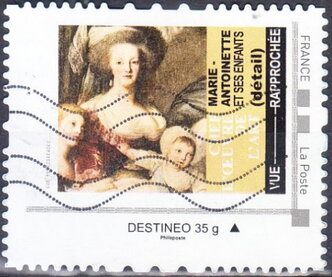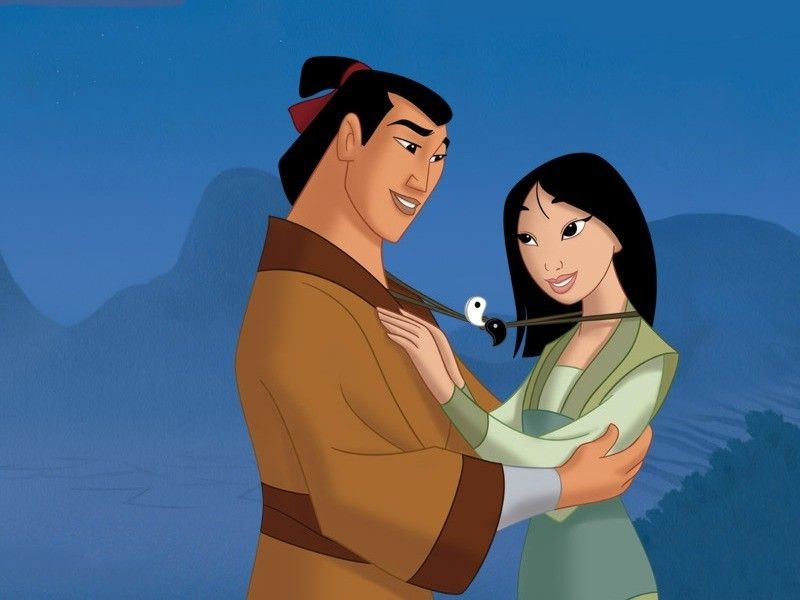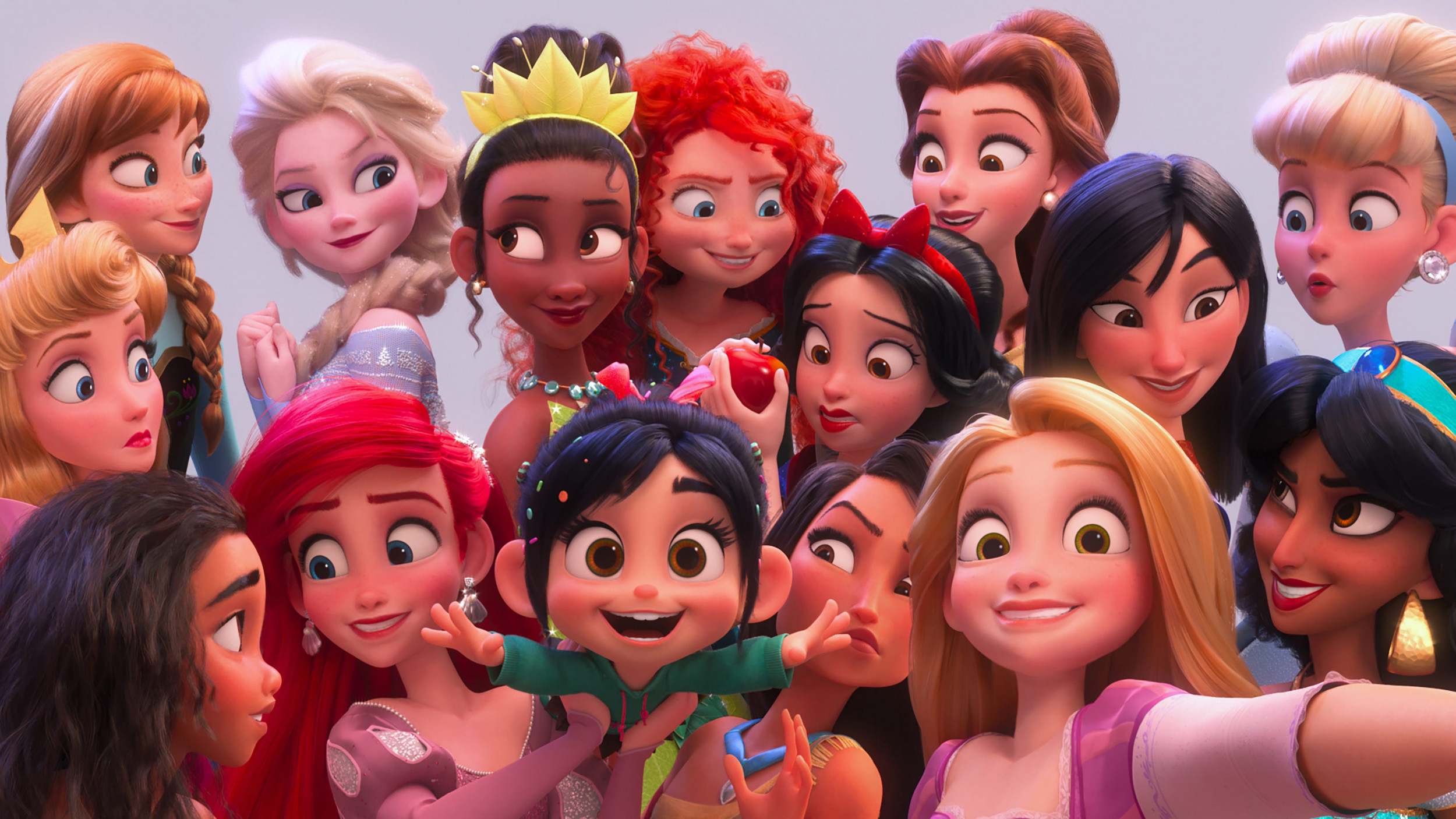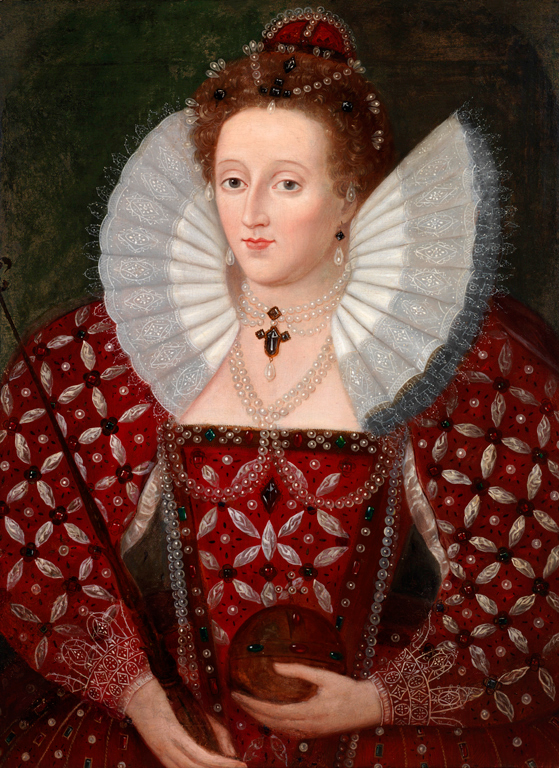Stamp: Marie Antionette et ses enfants (detail) vue rapprochée (France 2024)
Marie Antionette et ses enfants (detail) vue rapprochée (France 2024)
01 January (France ) within release Collectors : Montimbramoi. Miscellaneous goes into circulation Stamp Marie Antionette et ses enfants (detail) vue rapprochée face value Destineo No Face Value
| Stamp Marie Antionette et ses enfants (detail) vue rapprochée in catalogues | |
|---|---|
| Colnect codes: | Col: FR-MON 2024-36 |
Stamp is square format.
Also in the issue Collectors : Montimbramoi. Miscellaneous:
- Stamp - Lavoye BTP face value Monde;
- Stamp - Belmondo Comic Strip Book face value Lettre;
- Stamp - Aeroways face value Lettre;
- Stamp - Je viens bosser chez vous face value Lettre;
- Stamp - Jonas face value Lettre;
- Stamp - MSP Maison du Sante du Parc Amiens face value Lettre;
- Stamp - 2ETF face value Lettre;
- Stamp - Antique Binoculars face value Lettre;
- Stamp - Black colour of Eyeliner face value Lettre;
- Stamp - Fulli Telepeage face value Lettre;
- Stamp - Ile d'Yeu Lighthouse and Street View. Water colour by ... face value Lettre;
- Stamp - Le Puy en Velay. Rock/Chapel/Church Saint Michel d'Aiguilhe face value Lettre;
- Stamp - Painting by Hans Hartuns A&R Fleury face value Lettre;
- Stamp - UIISC no 1 Sapeurs Pompiers face value Lettre;
- Stamp - Mg face value Lettre;
- Stamp - APCNR Asso Philatelic Cartophile Numismatic RegioSaint Louis face value Lettre;
- Stamp - Mutuelle UMC face value Lettre;
- Stamp - Saline face value Monde;
- Stamp - Agylus face value Monde;
- Stamp - Aerial view of Coast face value Lettre;
- Stamp - Air Balloon face value Lettre;
- Stamp - Combi VW Voltswagen face value Lettre;
- Stamp - Docteur Wick Cabinet Dentaire face value Lettre;
- Stamp - Abstract Painting of a Tree face value Destineo;
- Stamp - Cliffs/Falaises d'Etretat face value Destineo;
- Stamp - Haute Joux Village Vacances Chalet Cap France face value Lettre;
- Stamp - IDLR cles de le parcours immobilier reussi face value Lettre;
- Stamp - Juke Box face value Lettre;
- Stamp - Louis Pasteur (1822-1895) face value Lettre;
- Stamp - Marie Antionette et ses enfants (detail) vue rapprochée face value Destineo;
- Stamp - Pastimes and games face value Lettre;
- Stamp - Du Corps a la Voix / From Body to Voice face value Lettre;
- Stamp - Porte de Peyrou, Montpellier face value Lettre;
- Stamp - Unidentified Coat of Arms face value Lettre;
- Stamp - Cote Cuisson face value Lettre;
- Stamp - Memoire d'Ornon face value Lettre;
- Stamp - Rando du Facture, Auneau Fleury St Symphorien face value Lettre;
- Stamp - Societe Nationale des Meilleurs Ouvriers de France NOF face value Lettre;
- Stamp - Saint Louis IX face value Lettre;
- Stamp - Violet. Conquer Melanoma / Vaincre le Melanome face value Lettre;
- Stamp - Espace Multiculturel Dagron face value Destineo;
Stamp Marie Antionette et ses enfants (detail) vue rapprochée it reflects the thematic directions:
Art is a diverse range of human activities in creating visual, auditory or performing artifacts (artworks), expressing the author's imaginative or technical skill, intended to be appreciated for their beauty or emotional power. In their most general form these activities include the production of works of art, the criticism of art, the study of the history of art, and the aesthetic dissemination of art. The oldest documented forms of art are visual arts, which include creation of images or objects in fields including painting, sculpture, printmaking, photography, and other visual media. Architecture is often included as one of the visual arts; however, like the decorative arts, or advertising, it involves the creation of objects where the practical considerations of use are essential—in a way that they usually are not in a painting, for example. Music, theatre, film, dance, and other performing arts, as well as literature and other media such as interactive media, are included in a broader definition of art or the arts. Until the 17th century, art referred to any skill or mastery and was not differentiated from crafts or sciences. In modern usage after the 17th century, where aesthetic considerations are paramount, the fine arts are separated and distinguished from acquired skills in general, such as the decorative or applied arts.
Painting is the practice of applying paint, pigment, color or other medium to a solid surface (support base). The medium is commonly applied to the base with a brush, but other implements, such as knives, sponges, and airbrushes, can be used. Painting is a mode of creative expression, and the forms are numerous. Drawing, gesture (as in gestural painting), composition, narration (as in narrative art), or abstraction (as in abstract art), among other aesthetic modes, may serve to manifest the expressive and conceptual intention of the practitioner. Paintings can be naturalistic and representational (as in a still life or landscape painting), photographic, abstract, narrative, symbolistic (as in Symbolist art), emotive (as in Expressionism), or political in nature (as in Artivism). A portion of the history of painting in both Eastern and Western art is dominated by spiritual motifs and ideas. Examples of this kind of painting range from artwork depicting mythological figures on pottery, to Biblical scenes rendered on the interior walls and ceiling of the Sistine Chapel, to scenes from the life of Buddha or other images of Eastern religious origin. In art, the term painting describes both the act and the result of the action. The support for paintings includes such surfaces as walls, paper, canvas, wood, glass, lacquer, clay, leaf, copper and concrete, and the painting may incorporate multiple other materials including sand, clay, paper, plaster, gold leaf, as well as objects. The term painting is also used outside of art as a common trade among craftsmen and builders.
A prince is a male ruler (ranked below a king, grand prince, and grand duke) or a male member of a monarch's or former monarch's family. Prince is also a title of nobility (often highest), often hereditary, in some European states. The female equivalent is a princess. The English word derives, via the French word prince, from the Latin noun prīnceps, from primus (first) and caput (head), meaning "the first, foremost, the chief, most distinguished, noble ruler, prince"
Princess is a title used by a female member of a monarch's family or by a female ruler. The male equivalent is a prince (from Latin princeps, meaning principal citizen). Most often, the term has been used for the consort of a prince, or for the daughter of a monarch. A crown princess can be the heiress apparent to the throne or the spouse of the heir apparent.
Queen - the title of reigning female monarch or the wife of the king in a number of countries
A Royalty is the immediate family of a king or queen regnant, and sometimes his or her extended family. The term imperial family appropriately describes the family of an emperor or empress, and the term papal family describes the family of a pope, while the terms baronial family, comital family, ducal family, grand ducal family, or princely family are more appropriate to describe the relatives of a reigning baron, count, duke, grand duke, or prince. However, in common parlance members of any family which reigns by hereditary right are often referred to as royalty or "royals." It is also customary in some circles to refer to the extended relations of a deposed monarch and his or her descendants as a royal family. A dynasty is sometimes referred to as "the House of ...". As of July 2013, there are 26 active sovereign monarchies in the world who rule or reign over 43 countries in all
A woman is an adult female human. Before adulthood, a woman is referred to as a girl (a female child or adolescent)







